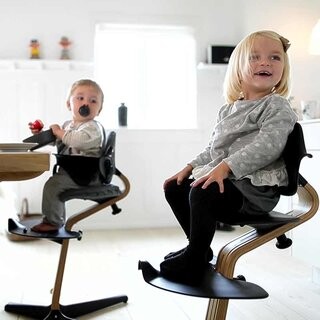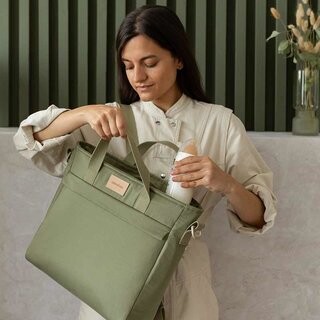
Breastfeeding is something completely natural and breast milk is the best food for your baby. Nevertheless, breastfeeding problems can occur time and again, leading to premature weaning. With the right tips from an experienced midwife or lactation consultant, a bumpy start can still turn into a harmonious breastfeeding relationship. We also offer a wide range of supportive aids to help you have a pleasant breastfeeding experience.
The most common breastfeeding problems and our recommendation
Breastfeeding problems are not uncommon and quite normal, especially at the beginning of the breastfeeding period. However, difficulties can sometimes also occur later, even though you and your baby are actually a well-rehearsed team. This is also normal. We will now tell you what problems can occur during breastfeeding and what you can do about them.
1. painful nipples make breastfeeding difficult
Slight pain in the nipples is quite common, especially at the beginning of breastfeeding. This is due to the unaccustomed strain, as sucking can cause minor injuries. If you still feel pain a few days after starting to breastfeed, your baby may not be latching on to the breast properly. Or it may not be able to grasp the breast properly.
The following tips can help with this problem:
-
The nipple should be at the top of your baby's palate and your little one should also suck in part of the areola.
-
After breastfeeding, you can leave a little breast milk on the nipple and let it air dry.
-
Use nursing pads and change them as soon as they are wet. For extremely sore nipples, nipple shields can also be helpful.
-
Your midwife can recommend special ointments.
Don't wait too long!
If the injuries to the nipple have not subsided after ten days, ask your midwife or doctor for help.
2. your baby does not grasp the nipple properly
Although breastfeeding is an absolutely natural process, it still requires some practice, especially for new moms. Some babies - especially premature babies or babies with malformations - often have difficulty grasping the nipple properly. Inverted or flat nipples can make breastfeeding even more difficult.
These tips will help your baby to grasp the nipple better:
-
First try different breastfeeding positions. This will help you to find out which one helps your baby to grasp the nipple best. A nursing pillow is a useful aid here. We recommend a nursing pillow that is as large as possible, such as our pillow from Träumeland. This will also optimize your baby's position.
-
Ensure comfort. Once your baby has grasped the nipple well, you should not change your position any more if possible. This will allow your baby to feed undisturbed.
-
A nipple shaper can help with inverted or flat nipples. When inserted into a comfortable nursing bra, it exerts light pressure and thus brings out the nipple.
3. your breasts are full and hard
It is not uncommon for breasts to feel full and hard shortly after giving birth. They can also still be a little tight after breastfeeding. This is actually normal, as the milk only comes in after a few days. The mature breast milk is then produced in larger quantities and the amount of milk will regulate itself over time.
If your body temperature is slightly higher, this can also affect the flow of milk and cause your breasts to tighten. To prevent a build-up of milk, you should cuddle and breastfeed your baby as often as possible. Cooling the breast or a therapeutic breast massage by an experienced lactation consultant can also work wonders.
4. milk stasis and mastitis
Despite all precautionary measures, sometimes it cannot be avoided: milk stasis. There are many reasons for this. From oversleeping a meal to favoring one side, many things are possible. The breast affected by engorgement becomes hot and hard, and there is also pain. In this case, you need to act quickly, as the engorgement can otherwise develop into mastitis. If your baby is asleep, wake it up and try to encourage it to drink. If this does not help, make warm compresses and stroke the breast with your hand from all directions. It may take a while, but you should only stop as soon as the pain subsides. If expressing does not help, a breast pump may be the solution. However, only use this until the milk flow starts.
Note
Clean and freshly expressed breast milk can be stored at room temperature for about four to six hours. Breast milk will keep for an average of five days in the fridge. However, you should not store breast milk for longer than a week.
Unfortunately, despite all the measures taken, chest infections cannot always be avoided. If you get chills, a high temperature and headaches and aching limbs, you should definitely have a medical examination. However, breast inflammation is not a reason to stop breastfeeding. Homeopathic medication can be helpful, as can heat in the form of showers, red light or compresses. In some cases, however, only antibiotics will help, in which case a break from breastfeeding may be necessary.
Breast pumps from Medela

Electric double breast pump Freestyle Flex
MEDELA
379,99 €

Swing Flex electric single breast pump solo
MEDELA
179,99 €
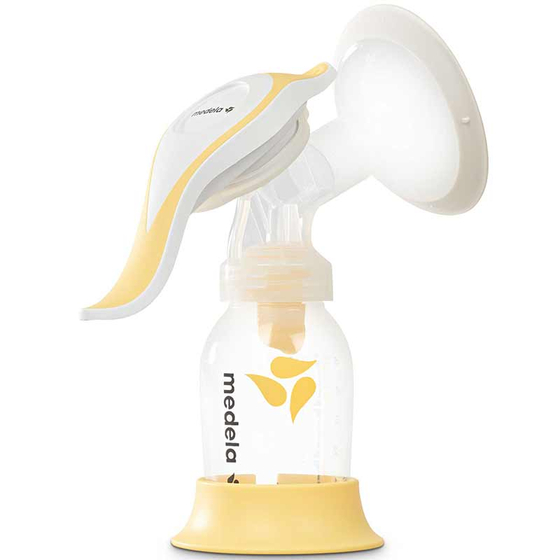
Manual breast pump Harmony Essentials Pack
MEDELA
49,99 €
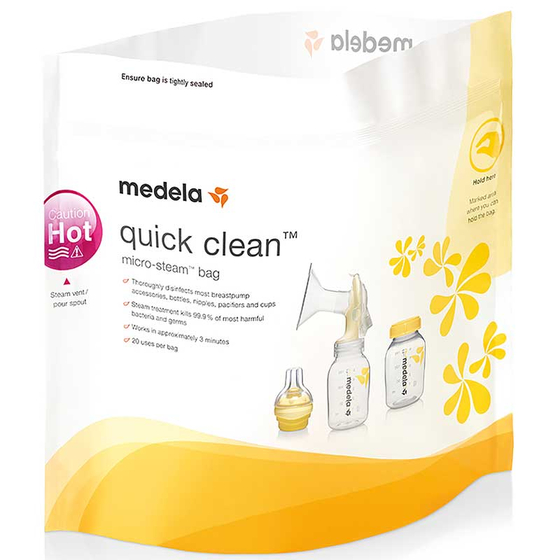
Quick-Clean bag 5 pieces
MEDELA
13,99 €
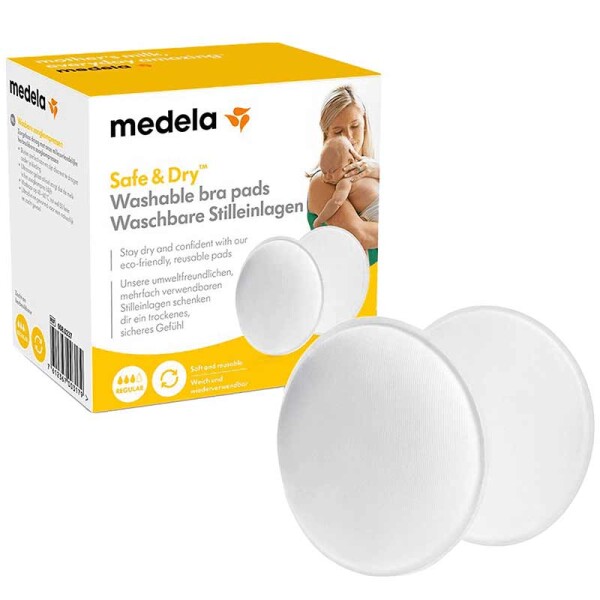
Washable nursing pads 4 pcs.
MEDELA
13,99 €
5. when the milk runs out
Many breastfeeding mothers know the problem: suddenly the milk let-down reflex kicks in and it is not possible to breastfeed your little sunshine. A large stain then appears on your clothes. No question, this can be very unpleasant in some situations. Here too, we can confidently recommend the use of nursing pads, which fit easily into a good nursing bra.
6. you have too much milk
Does your baby choke frequently when breastfeeding? Then you may have too much milk. Sometimes your breasts may also feel swollen and simply leak. In medicine, this is known as hyperlactation.
You can do this if you have too much milk:
Tip
If you are expressing too much milk, we particularly recommend using a manual breast pump. This allows you to better determine the amount of milk you express yourself.
7. you have too little milk
Many women are afraid of this breastfeeding problem: too little milk. Often completely unfounded. Milk production can be stimulated with the help of an electric breast pump if necessary. Only very rarely does a woman actually have too little glandular tissue and can therefore only produce a small amount of milk. This is also not a reason for early weaning. And even if it is, breastfeeding is still possible. Your baby will simply get all the milk you can give him and you can feed him with a breastfeeding-friendly bottle if necessary.
Do you really have too little milk?
You can tell whether your child is getting enough milk by the regular weight gain and four to six wet diapers a day. If both are the case, you should not worry about too little milk.
8. your baby refuses the breast
Breastfeeding mothers are no strangers to the problem: the baby cries or screams at the breast, turns and pushes away. There are many reasons for this and it usually resolves itself. If the problem persists, talk to your midwife first.
To ensure that milk production does not decrease, you should maintain it by pumping. You can then give the milk to your baby with a bottle. This way, your baby will still benefit from breast milk. Here too, we can warmly recommend the electric double breast pump from Medela.

How to get breastfeeding off to a good start
Although breastfeeding is probably the most natural form of nutrition for your baby, you both have to learn and practise your tasks first. The following tips should help you get off to a good and relaxed start with breastfeeding.
-
Invest as early as possible
Start breastfeeding your baby as soon as possible after the birth, as a good breastfeeding relationship ideally begins immediately after delivery. Ideally directly in the delivery room. Maternity clinics usually support this.
-
Breastfeeding on demand
Always breastfeed your baby when it wants to. Demand regulates supply and the more often you breastfeed your baby, the more milk production is stimulated. The time between feeds is irrelevant, one to three hours is absolutely normal, especially at the beginning.
-
Create correctly
To prevent breastfeeding problems, it is extremely important to latch your baby on correctly. The midwife will certainly show you how to do this in hospital. When breastfeeding, the back of the head and back should form a straight line, with the lower and upper lip turned out like a "fish's mouth". Ideally, your baby should grasp as much of the nipple as possible. Correct latching on also helps to avoid pain.
-
Attention: Growth spurts
Don't let your baby's growth spurts scare you. During these phases, your baby will come more often than usual. Maybe it even feels like it wants to drink all the time? Don't worry, this behavior is completely normal. During growth spurts, you can feed your baby more frequently without any problems. This way, milk production adapts to demand. After all, your baby is clever and knows exactly what it needs.
-
Always take care of yourself
Unfortunately, many women don't take care of themselves. Especially in the first few weeks after giving birth, breastfeeding is comparable to high-performance sport. It is therefore extremely important that you are fit. Physically and mentally. Drink a lot, ideally at least two liters a day. Eat a varied diet. You don't have to restrict your diet while breastfeeding. Only alcohol is taboo. Keep yourself mentally fit, read a book in quiet minutes and relax. Yes, we know - especially with a newborn, quiet moments are a rarity :)
-
Take it easy
Rest and relaxation should be the order of the day, especially in the postpartum period. You can find peace and quiet while breastfeeding. Also take time for yourself and sleep whenever you have the opportunity. You should limit household chores to the bare minimum. Visits too. You should also pay no attention to tidiness at this time. If you are offered help, accept it gratefully.
-
Involve the partner
Even if your partner is unable to breastfeed, you should definitely involve him or her. Your partner can be a good source of support when it comes to household chores, shopping or simply changing your baby's diaper, for example. Affection is also very important, especially when things don't always run smoothly.
Popular breastfeeding positions - position your baby correctly and avoid breastfeeding problems
To promote effective suckling and avoid breastfeeding difficulties, the correct latch-on technique is extremely important. You can do this by making yourself as comfortable as possible. Your baby should be facing you, your mouth should be at nipple level and open wide enough to be able to grasp the nipple easily.
The following applies to all breastfeeding positions:
the baby is guided to the breast or moves there itself. Not the other way around.
You can breastfeed your baby in different positions. No matter which one you choose: a good nursing pillow supports the position and relieves pressure on your back and upper arms. But what breastfeeding positions are there actually?
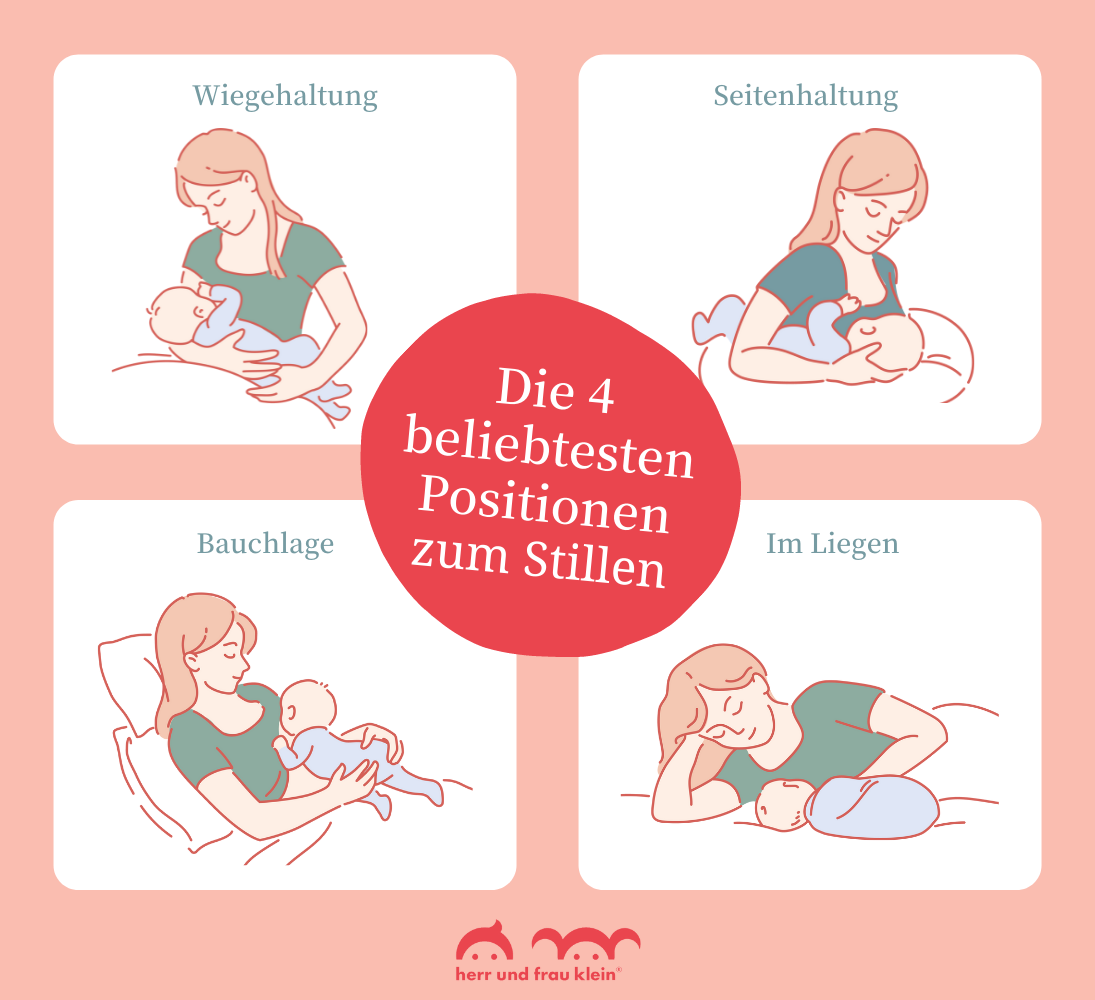
-
The cradle position
In the cradle position, your baby lies sideways in front of your tummy. This is the classic breastfeeding position.
-
The side posture
The side position, also known as the 'soccer hold', is a variation of the cradle position. You also place your baby against your breast from the front, but with your legs pointing backwards towards your back. This position is particularly suitable for stressed nipples.
-
The prone position
The prone position is very suitable for starting breastfeeding. You lean back comfortably and your baby lies on your stomach. This breastfeeding position supports your baby's newborn reflexes. It can usually move to the breast and latch on all by itself. This intuitive breastfeeding is particularly relaxing for you as a mom.
-
Breastfeeding lying down
Breastfeeding while lying down is particularly practical and relaxing at night. You may even be able to get a little sleep yourself. In this position, you and your baby lie facing each other sideways. A pillow in the baby's back provides support. To make it easier for your baby to reach the nipple, you can lift your breast with a rolled-up towel or gauze diaper if necessary. Of course, you can also find a large selection of cloth diapers here.
Our nursing pillows
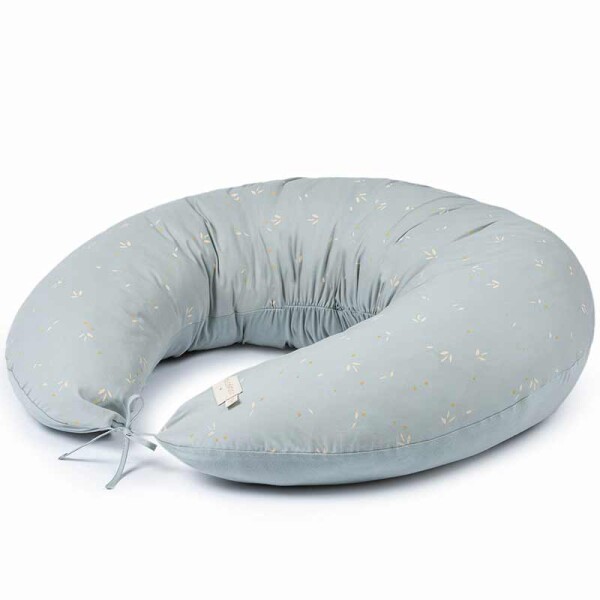
Nursing pillow Luna willow soft blue
NOBODINOZ
75,95 €

Nursing pillow with micro pearls 190cm
TRÄUMELAND
54,90 €
Sunrise willow dune nursing cushion
NOBODINOZ
49,95 €
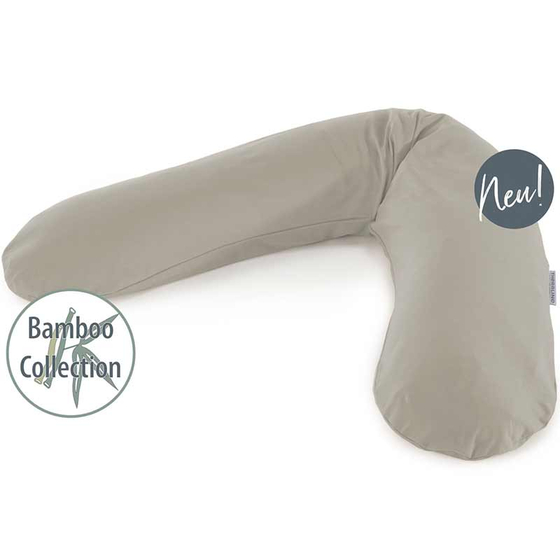
Bamboo nursing pillow cover 190x38cm
THERALINE
19,99 €
Don't worry: all beginnings are difficult - be patient
Your female body is a miracle of nature and, thanks to hormones, is optimally prepared for breastfeeding after giving birth. However, excitement and uncertainty can make it difficult to start breastfeeding. Breastfeeding then doesn't work straight away.
But don't worry, every beginning is difficult. Patience is important now. This is because milk production is stimulated with every breastfeeding session. Frequent breastfeeding helps the transition from the initial colostrum to mature breast milk. After about two to four days, you will feel that your breasts are producing more milk and becoming heavier. This is when the nutritious, well-satiating milk begins to form.
It's best not to put yourself under pressure if everything doesn't work the way you want it to straight away. If you have any problems, you should always seek professional advice from a lactation consultant or midwife.



